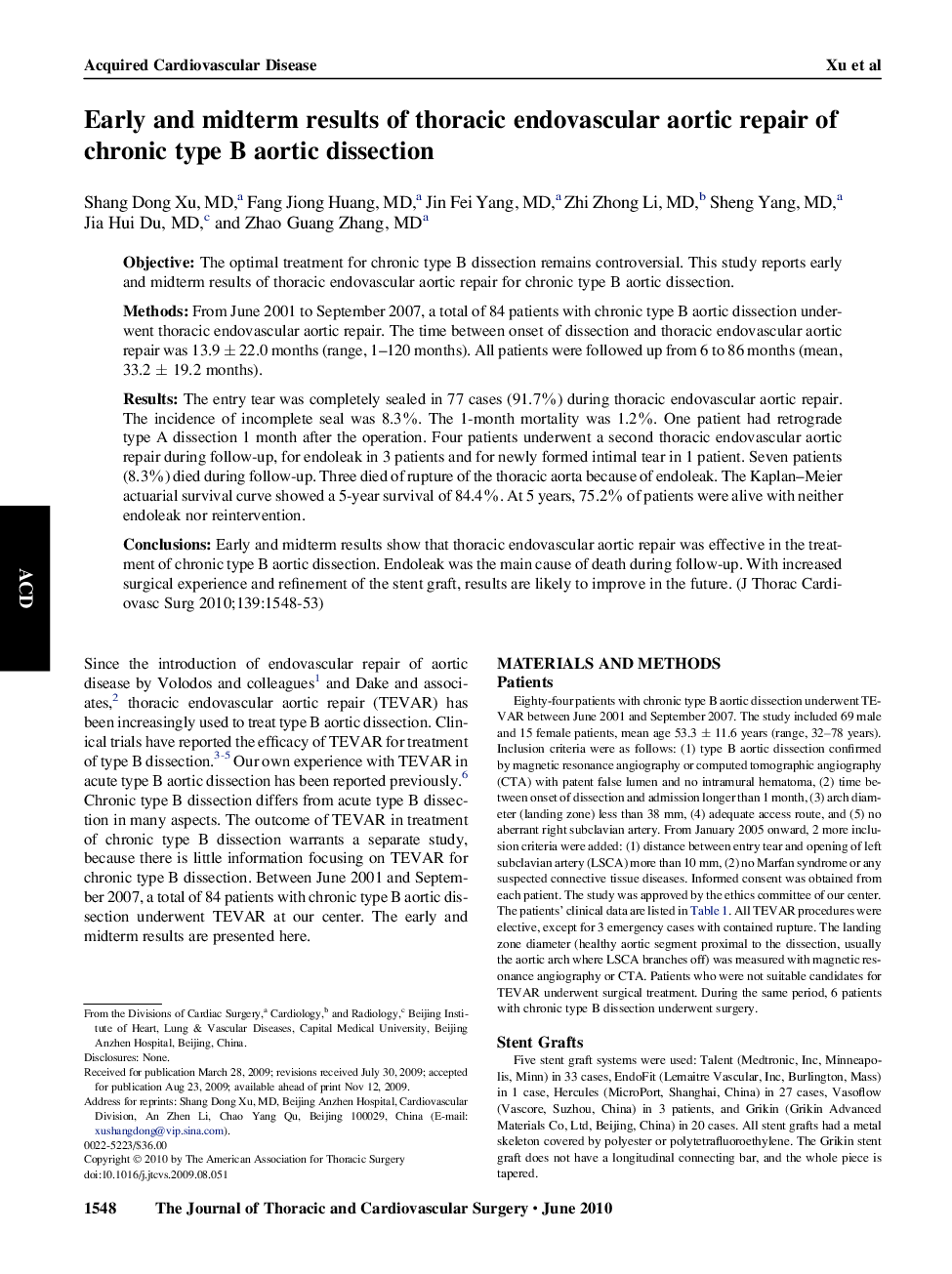| Article ID | Journal | Published Year | Pages | File Type |
|---|---|---|---|---|
| 2984099 | The Journal of Thoracic and Cardiovascular Surgery | 2010 | 6 Pages |
ObjectiveThe optimal treatment for chronic type B dissection remains controversial. This study reports early and midterm results of thoracic endovascular aortic repair for chronic type B aortic dissection.MethodsFrom June 2001 to September 2007, a total of 84 patients with chronic type B aortic dissection underwent thoracic endovascular aortic repair. The time between onset of dissection and thoracic endovascular aortic repair was 13.9 ± 22.0 months (range, 1–120 months). All patients were followed up from 6 to 86 months (mean, 33.2 ± 19.2 months).ResultsThe entry tear was completely sealed in 77 cases (91.7%) during thoracic endovascular aortic repair. The incidence of incomplete seal was 8.3%. The 1-month mortality was 1.2%. One patient had retrograde type A dissection 1 month after the operation. Four patients underwent a second thoracic endovascular aortic repair during follow-up, for endoleak in 3 patients and for newly formed intimal tear in 1 patient. Seven patients (8.3%) died during follow-up. Three died of rupture of the thoracic aorta because of endoleak. The Kaplan–Meier actuarial survival curve showed a 5-year survival of 84.4%. At 5 years, 75.2% of patients were alive with neither endoleak nor reintervention.ConclusionsEarly and midterm results show that thoracic endovascular aortic repair was effective in the treatment of chronic type B aortic dissection. Endoleak was the main cause of death during follow-up. With increased surgical experience and refinement of the stent graft, results are likely to improve in the future.
